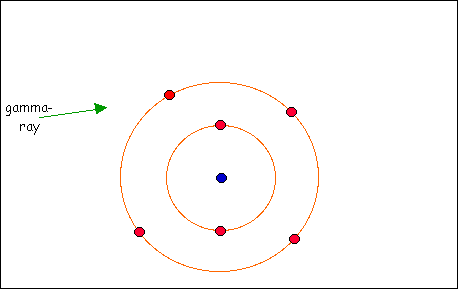Thoughts About That Unexpectedly Underwhelming Blast
As we mentioned
earlier, the North Korean government announced that they had successfully detonated a fusion warhead. Given the apparent small yield of the warhead, (6-10 kilotons) there has been considerable skepticism expressed. This skepticism is not unfounded especially given that getting such small yields are hard to get from what we normally think of as an H-bomb. There has been further speculation that the weapon is what is called a "
boosted fission weapon". This does not get the majority of its explosive force from fusion, but it does set off a fusion reaction which causes the fission reaction to burn much more completely. This can as much as triple yields on fission warheads, or reduce the amount of fissionable material necessary for any given yield. This alone would be a big breakthrough as it would allow North Korea to make more bombs for the same amount of fissile material. An increase of 2 or 3 times the number of bombs in the arsenal is a very substantial benefit.
Of course there is the problem of the very low yield. which has led many to conclude that this was a fizzle. That's possible, but the last three North Korean bombs have had very similar yields, in the 6-9 kiloton range. Small nuclear explosions are actually HARD. This was a problem the US had with the
W-54 program, where some of the intended the applications (
a bazooka!and
short range AAM) called for a sub kiloton yield but the tests kept overshooting it.
The North Korean's first test was very small and may well have been a fizzle, but the subsequent three have been very comparable in yields. Given the difficulties of getting a reliable nuclear yield below 10 kilotons this indicates extraordinarily consistent incompetence....or that it's by design.
It is possible that the North Koreans have had a string of fizzles, but this would mean that they thrice duplicated a design flaw that did not befall the Americans, Russians, Brits, Frenchmen, Chinese, Indians, Pakistanis South Africans* and (presumably)Israelis.
Furthermore, given that a good deal of this program is aimed at chest thumping and deterrence, it seems logical that the North Korean's, if they were experiencing difficulties with an implosion system, would, have at least one very simple gun type weapon like
Little Boy. Such weapons are so reliable as to not strictly need testing, so a respectable 10-20 kiloton blast could have been had for propaganda purposes easily.
They have not done this, and after their first detonations their tests have been fairly consistent in yield.
There’s some speculation that this is an attempted enhanced EMP weapon. There’s other speculation. Add to that that I have never worked in weapon design, and the last time I seriously needed to know about the minutia of nuclear weapons was more than thirty years ago, and you will understand that I am not going to speculate. We know that North Korea tested something, and they call it a sophisticated fission weapon; what they tested was low yield, and the last time I looked, low yield was harder to do than higher yields: particularly lower than 10 kt....[/quote]
Pournelle, caries on a discussion with
Stephanie Osbourne (a retired rocket scientist who also worked on nuclear planning in the cold war) and they both reference, but do not link to speculation that this is fission boosted weapon designed to utilize the Compton Effect in conjunction with the Earth's magnetic field to produce a powerful electromagnetic pulse.
The Compton Effect
Note that both sources indicate that this kind of small fusion assisted warhead could allow a 10 kiloton warhead to produce comparable EMP effects to a more conventional warhead in the megaton range (with the tradeoff that it would have to be detonated lower and therefore cover a smaller area).
This tradeoff would double the number of weapons needed to blackout most of the U.S.A. and southern Canada.
"Well, maybe the Norks just want us to appreciate the night sky like they do."
This of course solves their targeting problems as the target area for this weapon is measured in states rather than meters. Additionally, it would make a small device of the type they can already deliver anywhere on earth (they can launch small satellites) an actual strategic threat.
A total power failure involving hundreds of transformers blowing up (that requires replacement from France, Finland or China) would take years to recover from. Add to that occasional widespread fires from overloaded wires and the collapse of the internet as well as the ancillary effects of no power, refrigeration, or heat and this could become a very bad thing.
If this is in fact what the DPRK is doing (and we have little way of knowing) it would be quite logical as it would give them a credible counter-value strategic capability that a few nukes, even very big ones would not provide.
Fortunately, the North Koreans have modest goals (clinging to power by the throats of their citizenry, possibly conquering the south, and killing every Japanese male on earth) . While the regime is odious, it's not like they want to return the whole planet to the 6th century...like some people.
Amongst the ranks of THOSE PEOPLE naturally are included the Iranians, who are
working very closely wth the DPRK in
the advancement of SCIENCE as part of their general pattern of good behavior in the wake of the nuclear deal that solved everything. One probably ought to assume assume that much of the North Korean nuclear expertise is shared by Tehran now.
Of course the notion that a nation using slave labor to put together a nuclear bomb might bollox it repeatedly should not be utterly dismissed, but the consistency of the yields and the potential payoffs, mean that this option ought to not be rejected out of hand.
Posted by: The Brickmuppet at
02:05 PM
| Comments (1)
| Add Comment
Post contains 1117 words, total size 9 kb.
1
Part of the process of making plutonium bombs is breeding the plutonium. That takes a special reactor (NK has one) and you put U-238 in it to be bombarded with neutrons. U-239 goes through a double beta-decay and becomes plutonium 239.
But... plutonium-239 absorbs neutrons more easily than U-238 does and becomes plutonium-240.
So there's an ideal breeding time which gives you a bit of Pu-239 without significant amounts of Pu-240. If you run longer, you get more plutonium but an increasing percentage of it is Pu-240.
For purposes of making bombs, Pu-240 has different characteristics than Pu-239. If your plutonium has a lot of Pu-240 in it (several percent) then a standard bomb design won't work properly. It detonates too soon, with much less yield.
Does that sound familiar? That's what I think happened; the NK's got greedy and ran their breeding period too long.
Posted by: Steven Den Beste at Tue Jan 12 15:09:43 2016 (+rSRq)
Hide Comments
| Add Comment
33kb generated in CPU 0.1671, elapsed 0.2569 seconds.
70 queries taking 0.1879 seconds, 213 records returned.
Powered by Minx 1.1.6c-pink.












